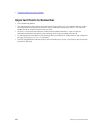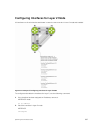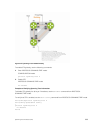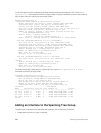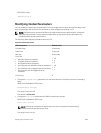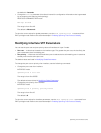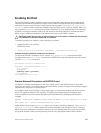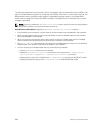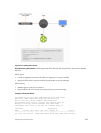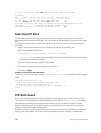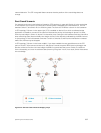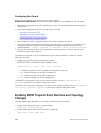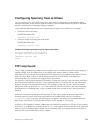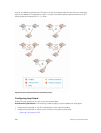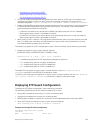
The following example shows a scenario in which an edgeport might unintentionally receive a BPDU. The
port on the Dell Networking system is configured with Portfast. If the switch is connected to the hub, the
BPDUs that the switch generates might trigger an undesirable topology change. If you enable BPDU
Guard, when the edge port receives the BPDU, the BPDU is dropped, the port is blocked, and a console
message is generated.
NOTE: Unless you enable the shutdown-on-violation option, spanning-tree only drops packets
after a BPDU violation; the physical interface remains up.
Dell Networking OS Behavior: Regarding bpduguard shutdown-on-violation behavior:
• If the interface to be shut down is a port channel, all the member ports are disabled in the hardware.
• When you add a physical port to a port channel already in the Error Disable state, the new member
port is also disabled in the hardware.
• When you remove a physical port from a port channel in the Error Disable state, the Error Disabled
state is cleared on this physical port (the physical port is enabled in the hardware).
• The reset linecard command does not clear the Error Disabled state of the port or the Hardware
Disabled state. The interface continues to be disables in the hardware.
• You can clear the Error Disabled state with any of the following methods:
– Perform a shutdown command on the interface.
– Disable the shutdown-on-violation command on the interface (the no spanning-tree
stp-id portfast [bpduguard | [shutdown-on-violation]] command).
– Disable spanning tree on the interface (the no spanning-tree command in INTERFACE mode).
– Disabling global spanning tree (the no spanning-tree in CONFIGURATION mode).
904
Spanning Tree Protocol (STP)



